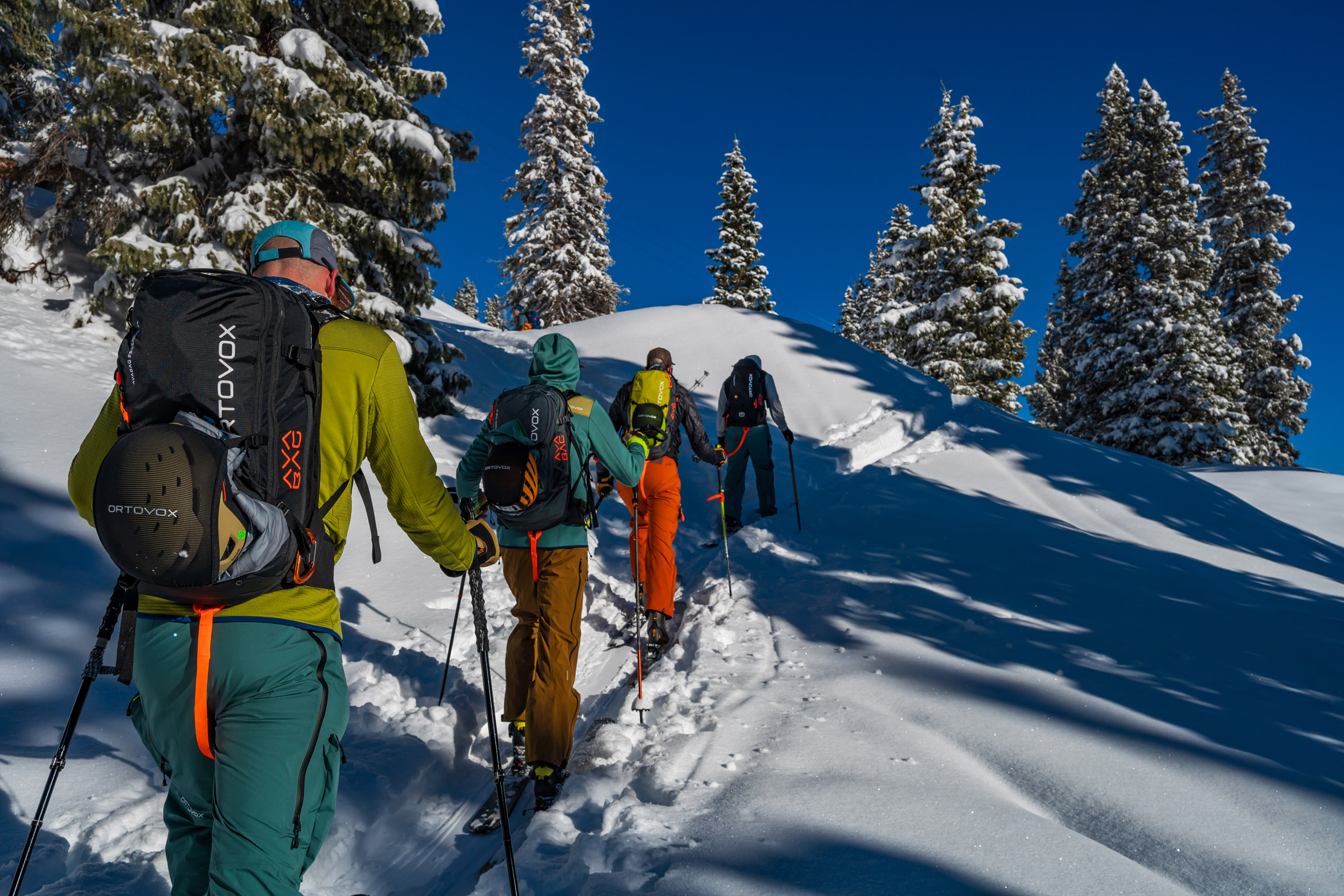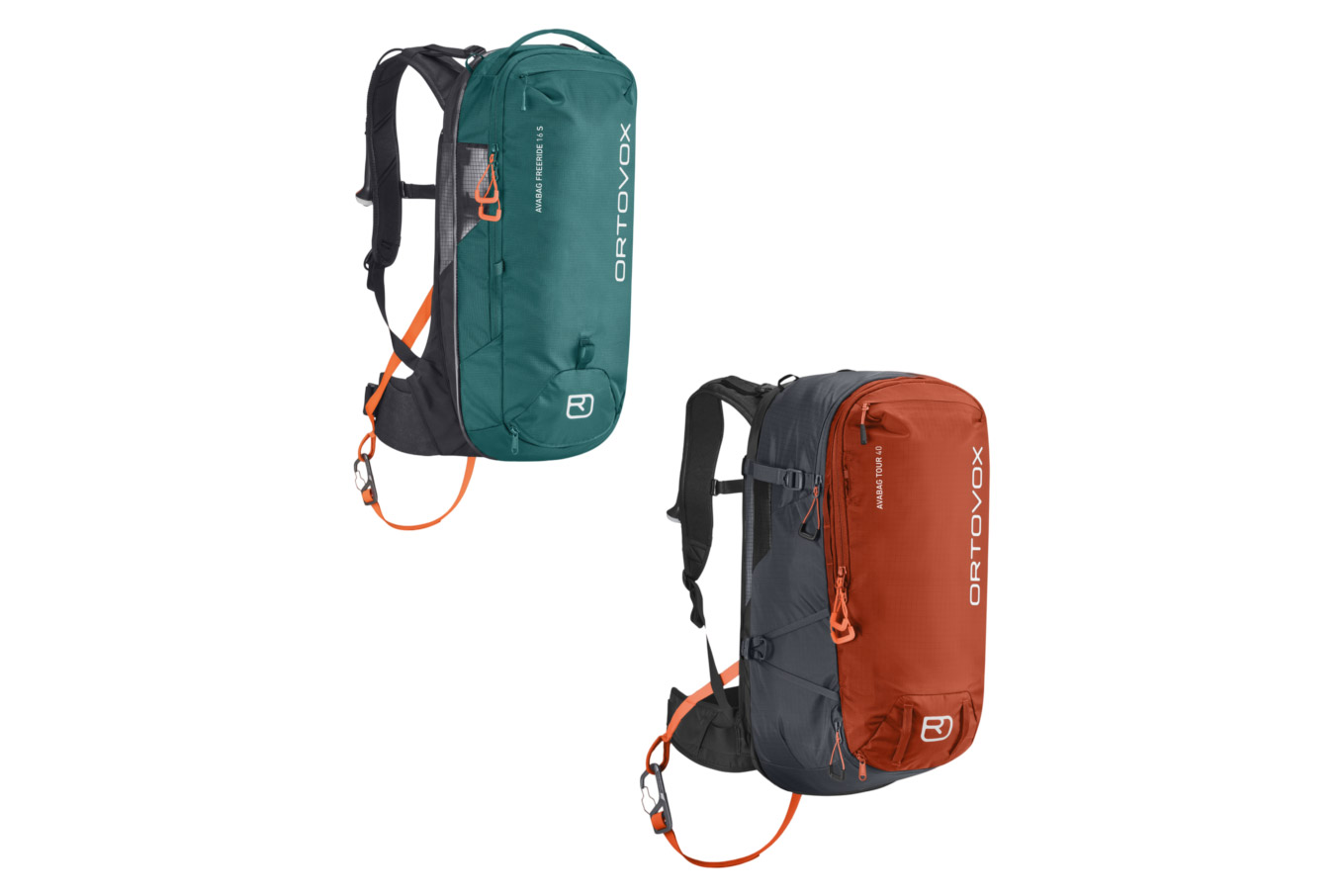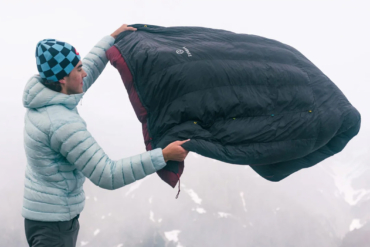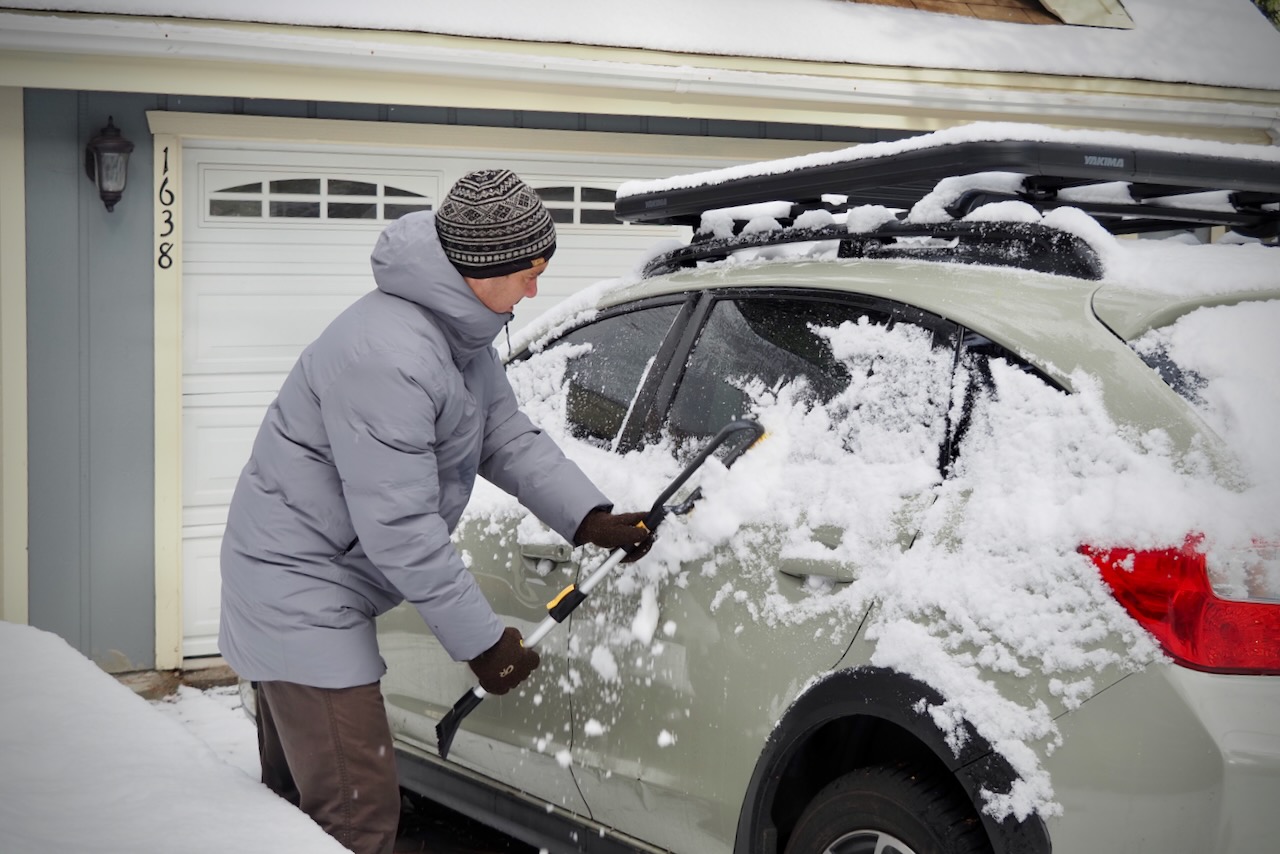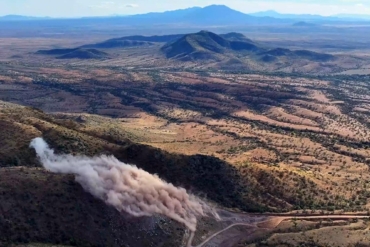An avalanche airbag pack can double your chances of survival if you’re a skier, rider, snowmobiler, or other winter snow traveler and you’re caught in a slide.
In the moving mass of an avalanche, everything that’s sliding — snow, ice, humans, trees, and rocks — shifts. Smaller objects are pushed down and buried deeper in the slide. Larger objects stay closest to the surface. It’s called the principle of “inverse segregation,” and it has cost the lives of countless skiers and riders in the backcountry.
However, a human wearing an avalanche pack with an avalanche airbag inflated dramatically increases your size and buoyancy in moving snow. It makes you the biggest particle around and the least likely to be buried.
There are a lot of reasons that skiers, riders, and sledders don’t wear one, or do wear one but don’t use it effectively. Ortovox’s Avabag Litric airbag pack addresses almost every one of those reasons, making it a smart investment and a pleasure to ski with.
In short: Ortovox’s Litric is a light and powerful system built on Arc’teryx’s Volt Air system. It’s user-friendly, the inflation system takes up minimal space in the pack, and the balloon compartment won’t pop open by accident. It’s rechargeable, it can be deployed multiple times in a row, and you can fly commercially with it. Plus, the pack has stress-reducing and safety-enhancing features as well as accessories that can modify the volume of your backpack.
- Price for full pack: $1,250-1,400
- Price for zip on pack bags: $120-160
- Airbag system: 2.4 lbs.
- Airbag volume when deployed: 150 L
- Total backpack weight: 4.7-5 lbs.
- Sizes: 16L-40L, including short torso lengths (SL)
- Back lengths: Regular (42-50cm/16.5-19.5") and Short/SL (36-44cm/14-17.3")
- Styles: Freeride, Tour, and Zero* (lightweight)
- Zip on attachments for varying size packs:
Ortovox Avabag Litric Pack Review
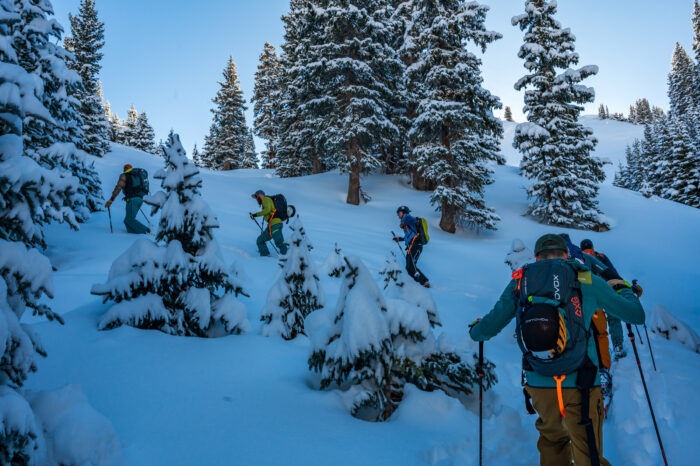
First Impressions
Avi airbag packs are heavier than ski packs without an airbag system. But this one is lighter by pack volume than other comparable options on the market. And that’s what I noticed first about this pack.
Even though I was testing a 40L-capacity Ortovox Avabag Litric, it felt light. On my scale, it weighs 5 pounds, 9 ounces compared to the Jet Force Halo 28, which weighs 7 pounds, 14 ounces. I also immediately noticed that it has a plastic waist buckle. Every avalanche airbag pack sold until this pack uses a metal waist buckle that’s hard to operate with gloves on, and cold to operate with gloves off.
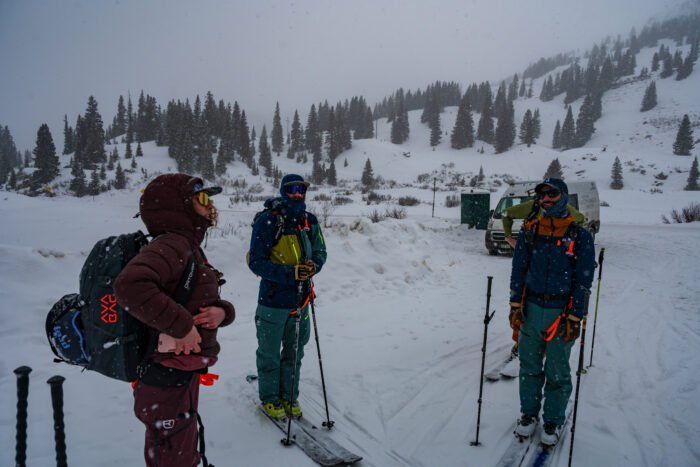
On the Avabag Litric, Ortovox uses a standard, easy-to-operate-without-looking waist buckle on the pack. A bright orange crotch strap attaches from the back of the pack to a reinforced loop on the pack’s left waistbelt with a built-in carabiner.
Ortovox doesn’t provide a stuff pocket for that strap because, as Ortovox Product Manager, Snow Safety Patrick Wesch says, “We want people to use that strap every time they wear the pack.”
In the Field
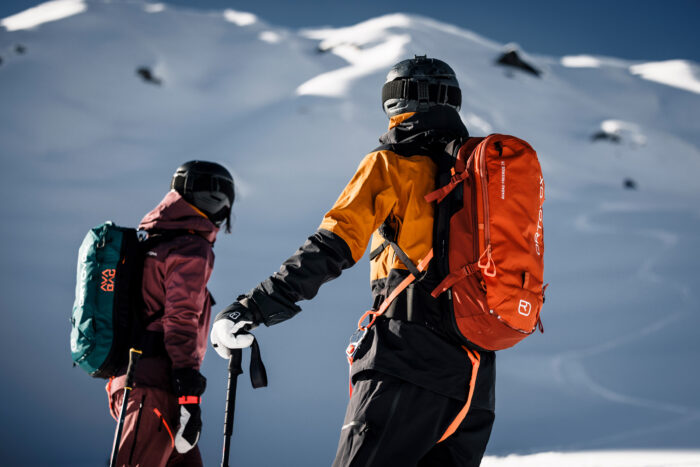
There are three ways an avalanche airbag pack needs to work in order to be effective. It needs to pack well, carry well, and inflate easily and reliably when you need it to.
“Your backpack shouldn’t disturb your sport,” says Wesch. The Litric doesn’t.
Features and Configuration
The pack’s A-frame ski carry attached skis to the pack at the closest possible point to my back. That kept my skis stable and pointing forward as I hiked, so I could hike without the skis hitting my legs. Extra straps allow for a snowboard carry. Minimalist front loops can also carry two ice axes and a helmet carry sling is included on the outside where it doesn’t interfere with the airbag operation.
One of my greatest frustrations with airbag packs is that the motor and fan take up so much space. The usable pack space does not match the claimed pack volume. So, there’s not always enough space for the gear I want to carry. I tested the 40L Litric, which is one of the biggest airbag packs made, and it had loads of space.
I tested the 40L pack, which is the largest that Ortovox offers. The good news: the pack bag zips off and lets me swap on other size pack bags as needed. Additional pack bags cost $120-160, with ultralight touring, freeride, and touring options available in a variety of sizes starting at 18 L. I plan to get at least one other bag for side-country and quick missions.
Pockets and Storage
The Ortovox Avabag Litric 40L pack has two main compartments. There is a shovel pocket and a main compartment. It opens with a long zipper that goes around three sides of the pack. The main compartment fully opens up like a chest.
A goggle/glasses zip pocket at the outside top of the pack gave me a place to stash snacks, sunscreen, and more. Zippered and stash pockets on the inside gave me additional organization options. And a small zippered pocket on the bottom outside of the pack held a helmet sling.
I missed having a waist pocket — I like to keep snacks, sunscreen, and other small items on my hip where I can get to them without stopping when I’m skinning. So, I added an aftermarket pocket, which works fine.
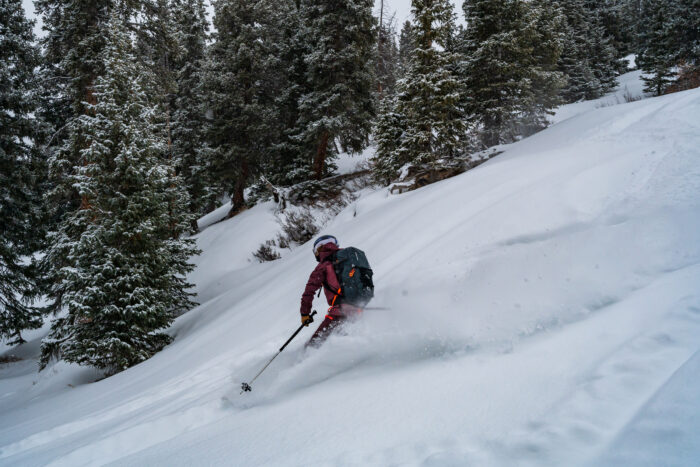
Safety and Comfort
With the bag packed, I loaded it on my back, clipping the adjustable crotch strap to a loop sewn to the hip belt and backed up to the pack frame. I clipped the waist buckle, which was intuitive because it’s a standard plastic backpack buckle, and clipped the chest strap.
Despite the Ortovox Avabag Litric’s 5-pound, 4-ounce claimed weight, within moments of starting up the skin track, I forgot I was wearing it. That’s the highest compliment one can pay to the pack on their back. Comfortable shoulder straps and an articulated waistbelt made the pack fit comfortably, whether I was bundled up for sub-zero temps, or wearing it over a baselayer top.
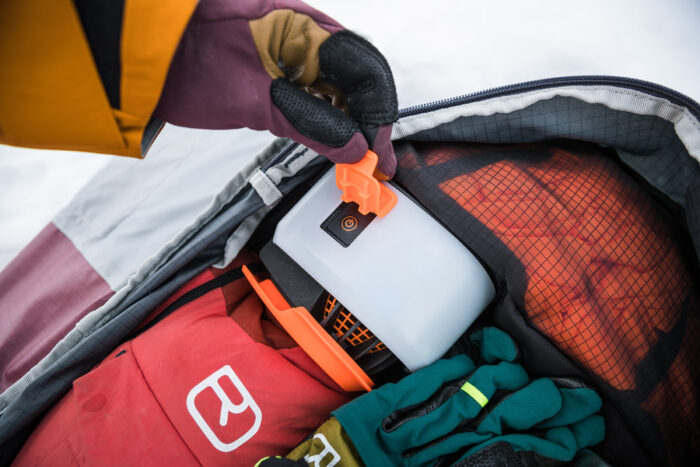
The Fan
After charging the pack with a USB-C cord (a full charge takes 2-3 hours), I turned it on with a push-button switch on the side of the mechanicals.
Once the pack is on, a rubber flap covers the switch to prevent it from accidentally getting turned off. A flashing light shows through the pack to let me know that it’s on and whether it’s time to recharge or not. Then, I twisted the shoulder strap-mounted handle into the “on” position.
The Litric uses a fan, energy-storing supercapacitors, and the Venturi effect to fill the balloon. A permanently installed 3.7V, 2,000mAh, 7.4Wh cellphone-size lithium-ion battery recharges the supercapacitors. It’s made to survive -40-degree C temps and to last for 10 years. And it can be charged while the pack is on. Even after sitting for a year, the battery can still recharge the supercapacitors.
Pull the Litric trigger, and once the fan has run its third inflation cycle, it takes 20 minutes for the pack to be ready to inflate the balloon again. The pack is built on Arc’teryx’s Volt-Air system, which was announced in 2016 and never released commercially. Ortovox and Arc’teryx teamed up in 2018 to refine the system and make it lighter.
Ortovox Litric Airbag Trigger
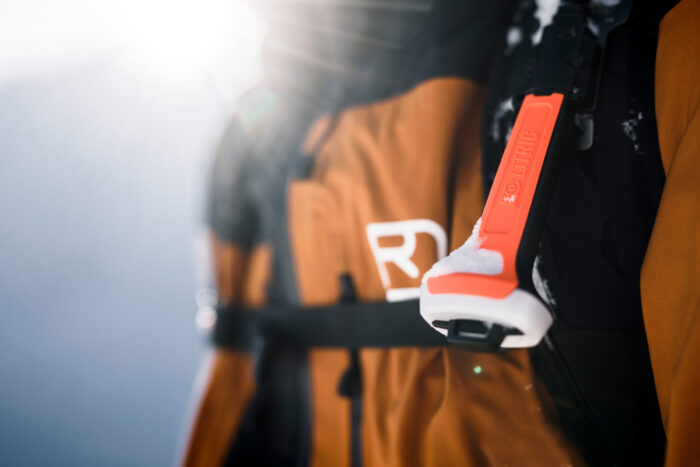
On many avalanche airbag packs, the trigger, which initiatives balloon inflation, is awkward. Many triggers live in a zippered shoulder strap until you pull it out so that it’s active, and then rezip the shoulder strap so that the zipper holds the trigger at an appropriate angle.
When the airbag pack trigger handle is zippered inside a sleeve like this, it increases the likelihood that you’ll forget to have it accessible and ready when you drop into a run. It also means that you have to zip the trigger handle away every run if you’re heliskiing (so your bag doesn’t inadvertently deploy in the helicopter). Every time you put the trigger away, it’s one more chance to forget it when you start skiing.
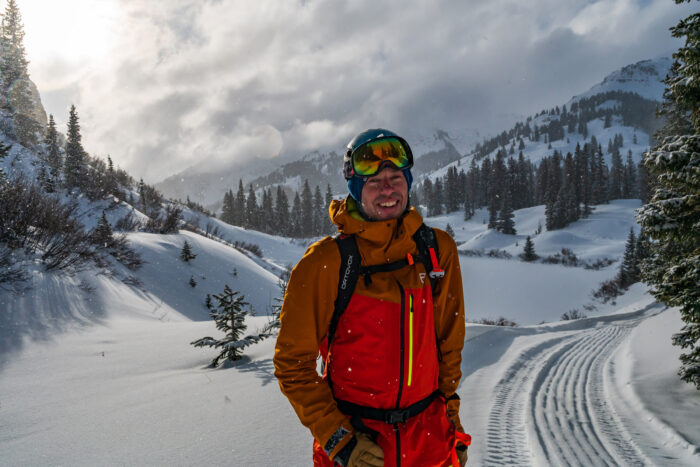
Deploying the Airbag
The Litric trigger is oval (where most avi pack handles are T-shaped). For me, the oval was easier to grab with gloves on. I was also surprised at how little force was required to pull the trigger compared to other packs. Standards require that an avi airbag trigger takes 50-160 newtons of force to activate. This one requires 50, which was a light tug. To deactivate the trigger, it needed a quick twist.
A Bowden cable similar to a bicycle shifter cable is attached to the trigger handle. When pulled, that simultaneously initiates the blower fan and releases a clip holding the balloon compartment closed. The balloon is then free to inflate and bursts from the top of the pack. It reaches full capacity in just 5 seconds though the fan blows for 7 seconds.
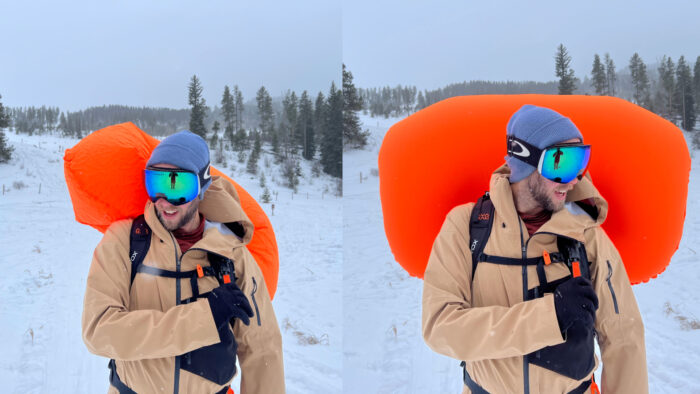
The Litric pack also allows for multiple inflations per charge. So, if it’s accidentally deployed, or intentionally deployed during a practice session, you’re still protected. The pack is guaranteed for 50 inflations over 10 years, though the pack has been tested to 100 inflations. An LED lets you know when you’ve reached 50 inflations.
Because European avalanche airbag certification standards require airbag balloons to stay full for 3 minutes, the blower pulses air into the balloon twice more after initial inflation.
A fan-powered system like the Litric lets you practice and get to know how your airbag works. And it does it without incurring extra costs. The sticker price of a canister system is significantly less. But every time you pull the trigger on a canister system, you have to refill your canister. It’s inconvenient and it’ll likely cost you over $100. Each canister is good for one inflation only.
And, importantly, you can’t fly with it. So if you travel to ski like I do, you have to ship your canister or buy or rent one on-site. It’s a lot of logistics. This bag is TSA-friendly. It can be carried onto a plane as personal protective equipment (PPE) and is ready to use on arrival.
Repacking the Airbag
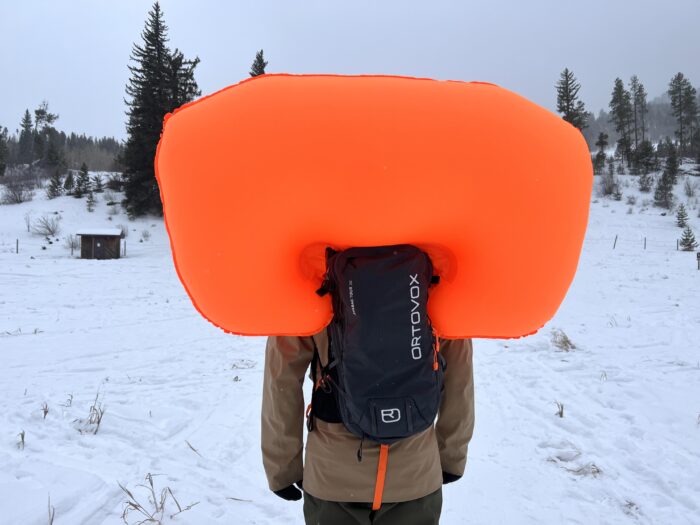
Many airbag balloons are made from coated material that’s stiff and heavy. The Litric’s balloon meets tensile and tear strength requirements with a supple double balloon. Inside, an airtight foil traps air, while an exterior balloon can take a beating. So when it was time to deflate and repack the Litric’s balloon, the process was easy and stress-free.
To deflate, use the fork-shaped plastic tool Ortovox includes in the top pocket, attached by a cord. You insert the fork into a slot in the pack’s mechanicals, and the balloon air instantly drains out.
With the fork in, I was able to squeeze out residual air and stuff the balloon into its compartment — no folding required. A tug on the trigger reengaged the balloon compartment’s central clip. Then, regular zippers (not burst zippers) on each side zip closed. Finally, a flap folds over the zippers to arm the balloon for its next inflation.
I loved the mechanical latch because it never accidentally opened. The standard zippers also didn’t open unintentionally — a problem I’ve had frequently with overstuffed airbag packs.
Ortovox Avabag Litric: Who’s It For?
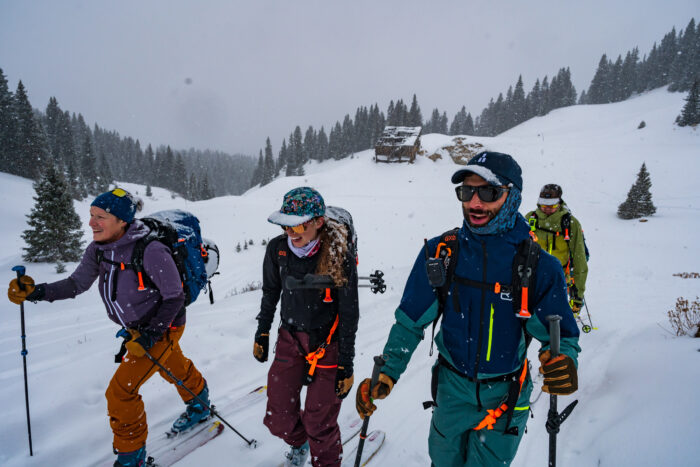
An avalanche airbag pack doesn’t guarantee that you’ll survive an avalanche. Trauma and terrain features can also kill you. But an airbag pack does double your chances of survival. Whether you ski, board, snowmobile, snowshoe, sled, or otherwise play around in the snow in the backcountry, it’s worth considering wearing one.
The Ortovox Avabag Litric is one of the most user-friendly and versatile avabags on the market. It’s rechargeable, reusable, requires no air canister refills, is TSA-friendly, and can even be modified with zip-on accessories to change the volume of the pack.
Sure, this avabag costs $1,400. Spread that over 10 years, though, and that’s less than the cost of buying one ski resort day pass every year. And yes, $1,400 is a lot of money — but it’s also a relatively affordable insurance policy.
